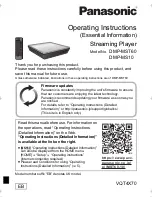
4
Sekundär 0-10-16 V~
16 V
Primär 230 V~
Gefertigt nach VDE 0570 EN 61558
Lichttransformator
5200
Nur für trockene Räume
Primär
230 V 50 - 60 Hz
Sekundär
max.
3,25 A
52 V
A
ta 25°C
IP
40
10 V
0 V
Abb. 2
Fig. 2
braun /
brown
rot /
red
rot /
red
grün /
green
grün /
green
schwarz /
black
schwarz /
black
blau
blue
blau
blue
gelber Stecker
yellow plug
Anschlüsse nicht vertauschen!
Do not mix up the plugs!
z. B. /
e. g.
5200
vom Decoder
from the decoder
separat beiliegendes Verlängerungs-
kabel
extension cable is enclosed
separately
3. Adresseinstellung
Die Adresseinstellung erfolgt über den kleinen Drucktaster
auf der Leiterplatte des Dreiwegweichendecoders. Dazu
schließen Sie den Decoder zunächst gemäß Abb. 1 an der
Weiche und den Antrieben an – die Leiterplatte jedoch noch
nicht auf die Befestigungsstifte der Weiche aufstecken! Für
die folgende Adresseinstellung legen Sie bitte die Weiche
auf den Rücken und achten darauf, dass der freihängende
Decoder mit keinen Metallteilen der Weiche und den Antrie-
ben in Berührung kommt. Der Handstellhebel der Weiche
muss sich frei bewegen können – heben Sie die Weiche
dazu ein wenig an oder legen Sie etwas darunter.
Die Weiche schließen Sie nun fahrstrommäßig provisorisch
an Ihre Digitalzentrale an.
Schalten Sie vor der Programmierung Ihr Digitalsystem
aus und wieder ein.
Vor Programmierung nach Abschnitt 3.2 und 3.4 (siehe un-
ten) darf sich keine Lok mit eingeschalteter Funktionstaste
im Lokspeicher der Zentrale befinden.
Je nach vorhandenem Digitalsystem bzw. Digitalformat
verwenden Sie bitte eine der folgenden Programmierungs-
methoden. Drücken Sie den Drucktaster am Weichendeco-
der mit einem Finger oder einem Kunststoff-Kugelschreiber
mit eingezogener Mine (es muss jeweils ein kleiner “Klick”
spürbar sein):
3. Setting the address
You can set the address with the small push-button switch
on the 3-way turnout decoder board. To do this you have
to connect the decoder to the turnout and the machines
as shown in fig. 1 – but do not yet plug the board onto
the turnout’s mounting pins! For the following operation
please turn the turnout on its back and make sure that
the decoder board does not touch the metal parts of the
turnout and the point machines. Now please temporarily
connect the rails of the turnout to your digital command
station via the rails. The handlever of the turnout has to be
able to move freely – you should lift the turnout somewhat
or use some kind of underlay.
Before programming please switch your digital system off
and on again.
Before programming according to paragraphs 3.2 or 3.4
no loco with set function is allowed to be in the memory
of the central unit.
Depending on your digital system, please use one of the
following programming methods. Push the push-button
switch on the turnout decoder with your finger or with a
ball pen with a hidden lead (you have to feel a soft “click”):
zur Digital-Masse (braun)
to the digital ground
(brown)


























